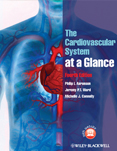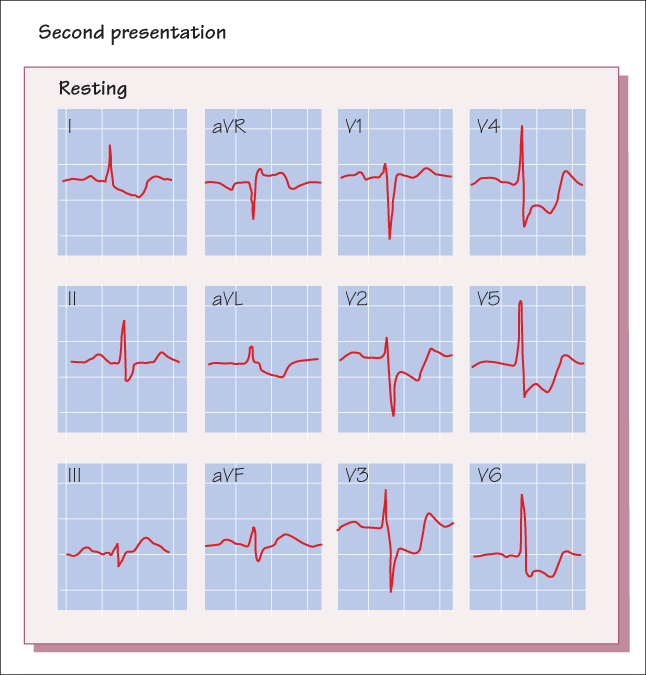- Home
- Cases
- Revision notes
- Your feedback
- Become a reviewer
- 'At a Glance' series
- More student books
- Student Apps
- Join an e-mail list



You are asked to supervise an exercise stress test on a 65-year-old man. He saw his doctor last week for exertional chest pain and mild dyspnoea. He has had chest discomfort for about a year, but the increased frequency of angina prompted him to see his doctor. He has chest pain when he walks more than one block, and if he continues he becomes breathless. He never has chest pain or dyspnoea at rest. He has no ankle swelling, orthopnoea or paroxysmal nocturnal dyspnoea. When you examine him before the stress test, his blood pressure is 120/86 mmHg heart rate 82 and regular, jugular venous pressure 5 cmH2O and lungs are clear. His apex beat is slightly lateral to the midclavicular line and mildly sustained. He has a normal S1 and a single S2. An S4 gallop is noted. He has a soft crescendo–decrescendo systolic murmur, best heard at the upper right sternal border, radiating to the carotids and the apex. The carotid pulses are delayed and diminished.
You call the referring doctor to discuss the signs and symptoms, cancel the stress test and perform an echocardiogram instead.
(a) What is the likely diagnosis based on the physical examination? What are the pathophysiological mechanisms underlying these findings?
(b) He only had a soft systolic murmur. If you knew that his murmur last year was louder and harsher in intensity, would this have reassured you? What could go wrong if he did do the stress test?
(c) What was likely to be observed on the echocardiogram and why?
(d) Catheterization data The patient is formally referred to you, and you recommend valve replacement. He undergoes cardiac catheterization, and the haemodynamic data are shown in Figure Case 2. Cardiac output is 5.2 L/min and heart rate is 77. There is no significant coronary artery disease.
The aortic valve area can be estimated by the simplified formula:
Valve area = cardiac output/ ![]()
Based on the data given, what is his estimated valve area?
(e) When admitted for surgery, he complains of chest pain. The intern orders sublingual nitroglycerin for him. Why is this a bad idea? What is the chest pain due to? What therapeutic options are available for protracted chest pain in this case?